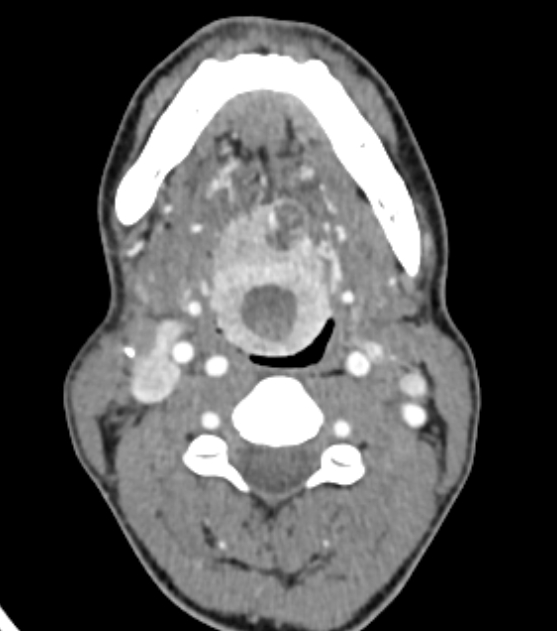Presentation
Dysphagia, dyspnea and hoarseness of voice.
Patient Data





A well-defined hyperdense lesion centered upon the base of the tongue with postcontrast enhancement. It shows few hypodense nodules. It is seen abutting the epiglottis. The mass encroaches upon the oropharyngeal airway which is relatively narrowed. It is seen surrounded by prominent small arteries and veins (seen within the epiglottis and aryepiglottic folds).
No evidence of thyroid tissue at the anatomical site of the thyroid gland at the base of the neck.
Case Discussion
Lingual thyroid occurs due to the lack of normal caudal migration of the thyroid gland from the foramen cecum down to its normal location anterior to the larynx and upper trachea. Lingual thyroid represents 90% of ectopic thyroid glands, the majority of these show absent thyroid tissue in the normal anatomical location.
It follows all imaging criteria of the normal thyroid gland and is susceptible to all known thyroid pathologies, being symptomatic due to its mass effect when it enlarges as in multinodular goiter. Also, about one-third of patients develop hypothyroidism.




 Unable to process the form. Check for errors and try again.
Unable to process the form. Check for errors and try again.